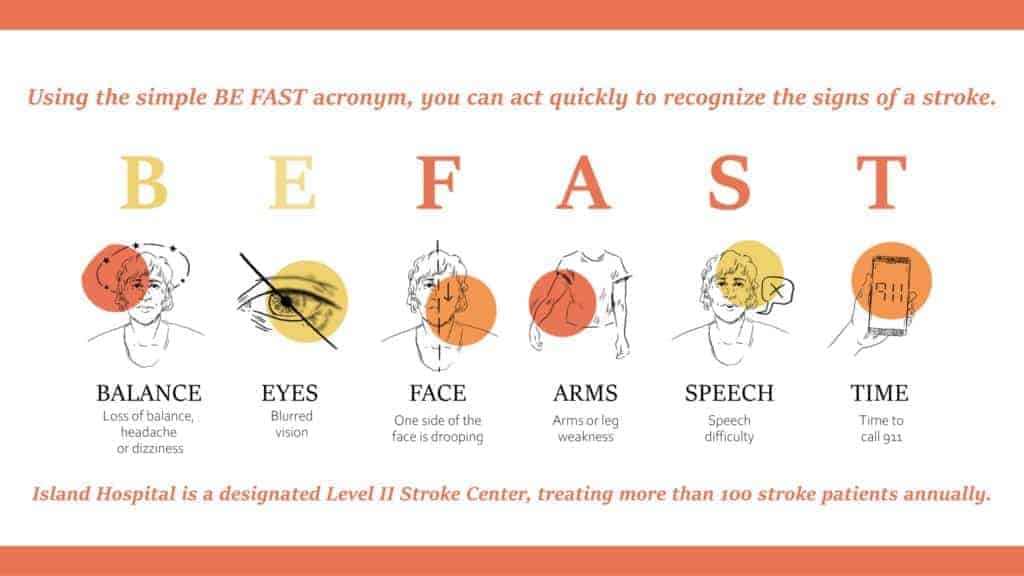Know the Signs and Symptoms of Stroke: When Every Minute Counts

According to the Centers for Disease Control and Prevention (CDC), stroke is a leading cause of death in the United States and is a major cause of serious disability for adults. Every 40 seconds, someone in the United States has a stroke, so by knowing the signs and symptoms, as well as how to act if you think someone may be experiencing a stroke, you can help prevent death and disability. When it comes to stroke, every minute counts!
What is a stroke?
A stroke happens when there is a sudden interruption of blood to the brain. There are two types of stroke and both types stop blood from getting to the brain. As a result, brain cells die due to a lack of oxygen and essential nutrients. An ischemic stroke is when an artery in the brain gets blocked by a clot. A hemorrhagic stroke is when a blood vessel in the brain leaks, causing bleeding into the surrounding area. The impact of a stroke on an individual depends on the area of the brain where it occurs. Diff erent parts of the brain control diff erent functions and, therefore, a stroke impacts each person differently.
Signs and Symptoms
A stroke usually occurs suddenly and requires immediate medical treatment, so it is very important to recognize warning signs and call 911 right away.
By adopting a healthy lifestyle and knowing the modifiable risk factors, you can take steps to prevent stroke. One of the most important things you can do to reduce your risk of stroke is control high blood pressure. By making a few simple lifestyle changes, such as eating a healthy diet, exercising regularly, limiting alcohol consumption and quitting tobacco use, you can lower your blood
pressure and keep it down. Eating a diet containing lots of fruits and vegetables (five or more servings per day) is an important step in lowering cholesterol and managing elevated blood pressure.
Be sure to incorporate exercise into your daily routine to help you lose weight, manage type 2 diabetes and control stress. Start slowly with a walk around the block and gradually work up to 30 minutes of moderate physical activity per day to improve your overall wellness.
The good news is that 80% of strokes can be prevented. Schedule a check- up with your primary care provider to discuss your risk factors such as high blood pressure, type 2 diabetes, high cholesterol, smoking and obesity. Take charge of your health and make time for health checks that evaluate your stroke risk.
